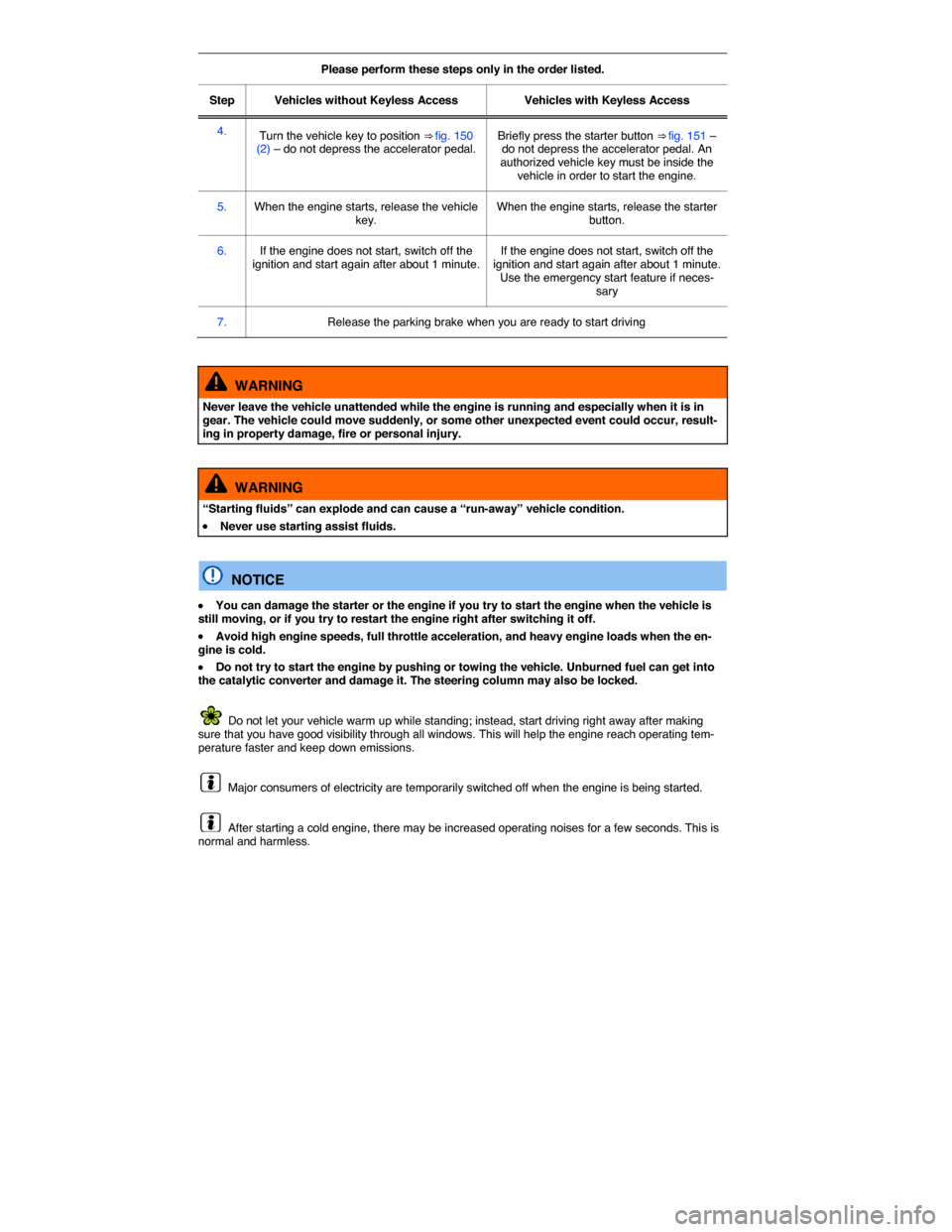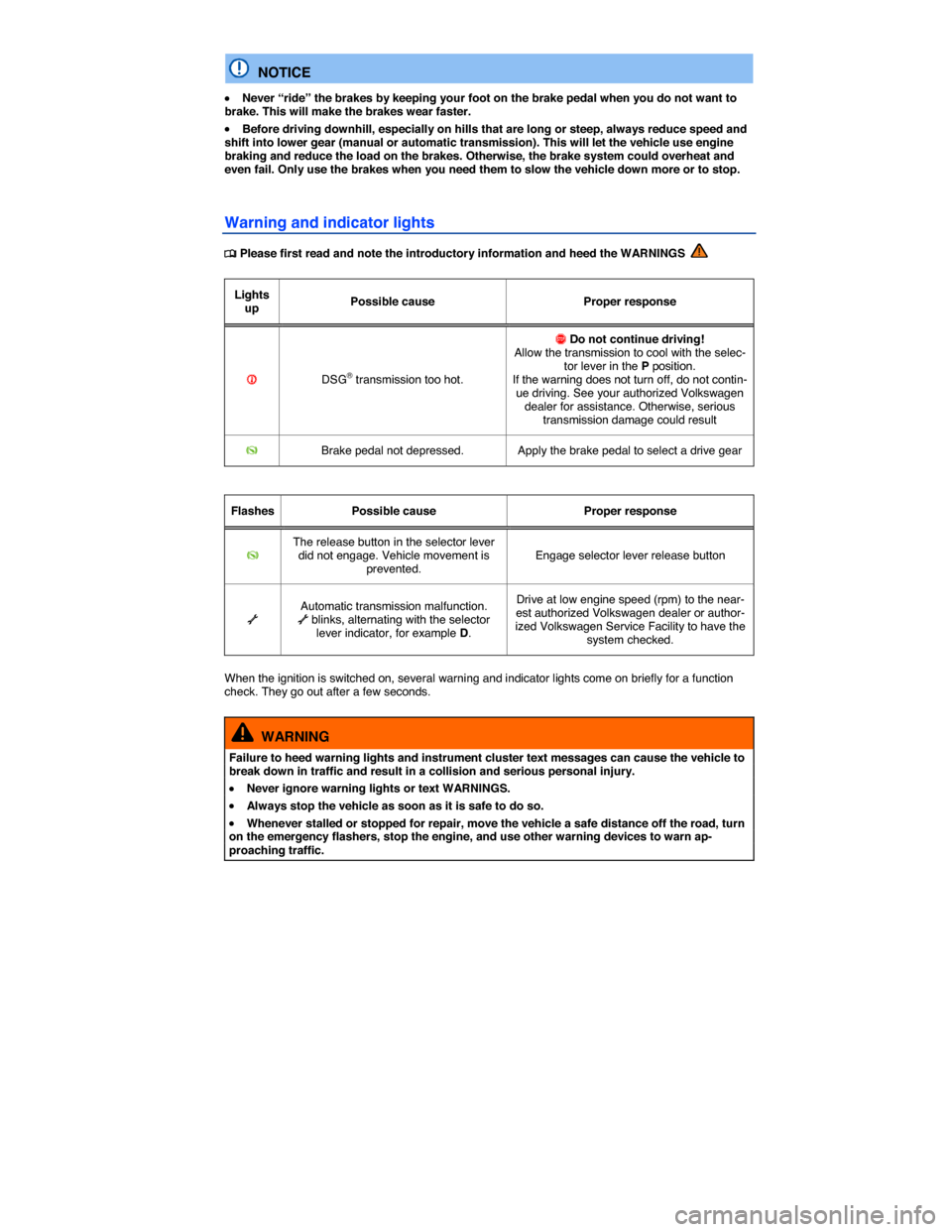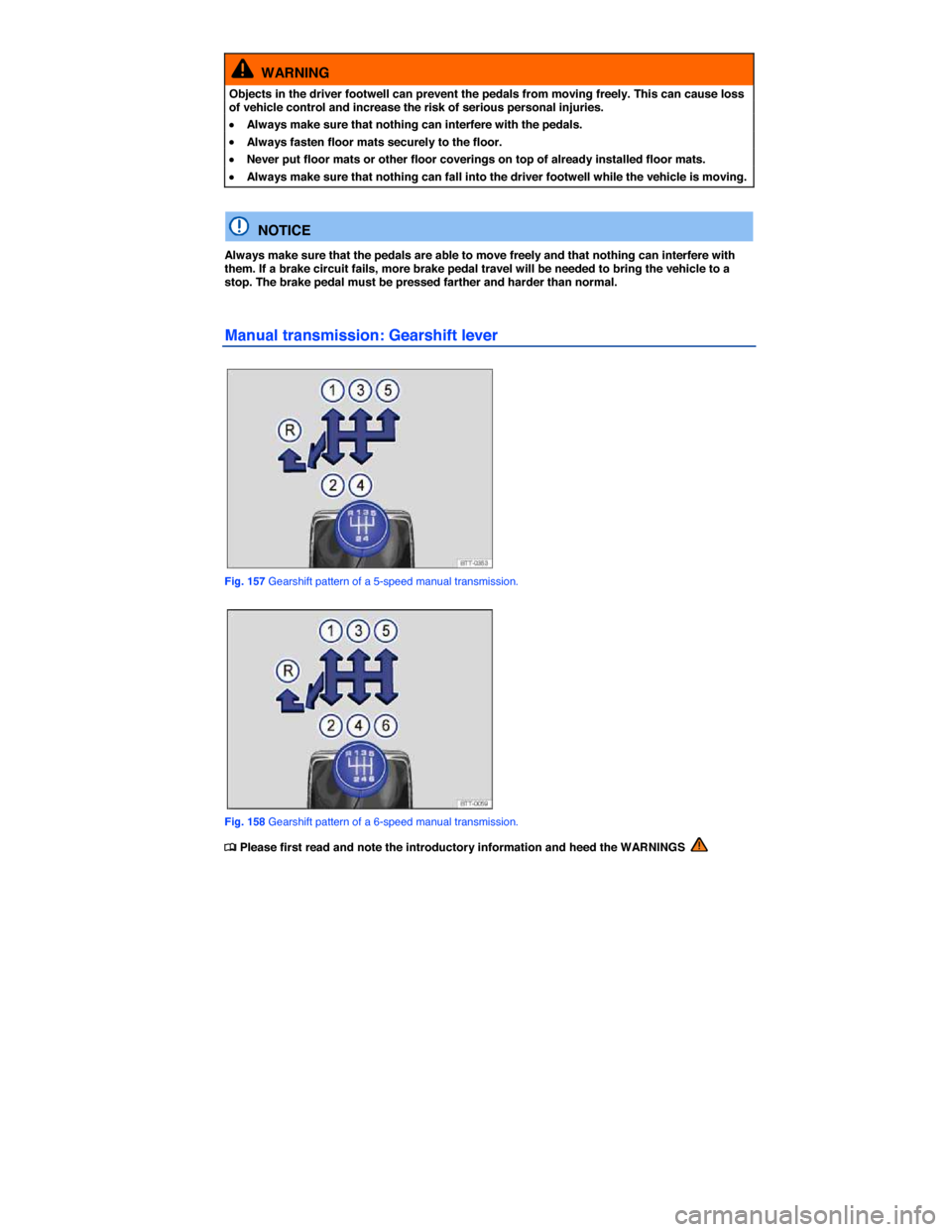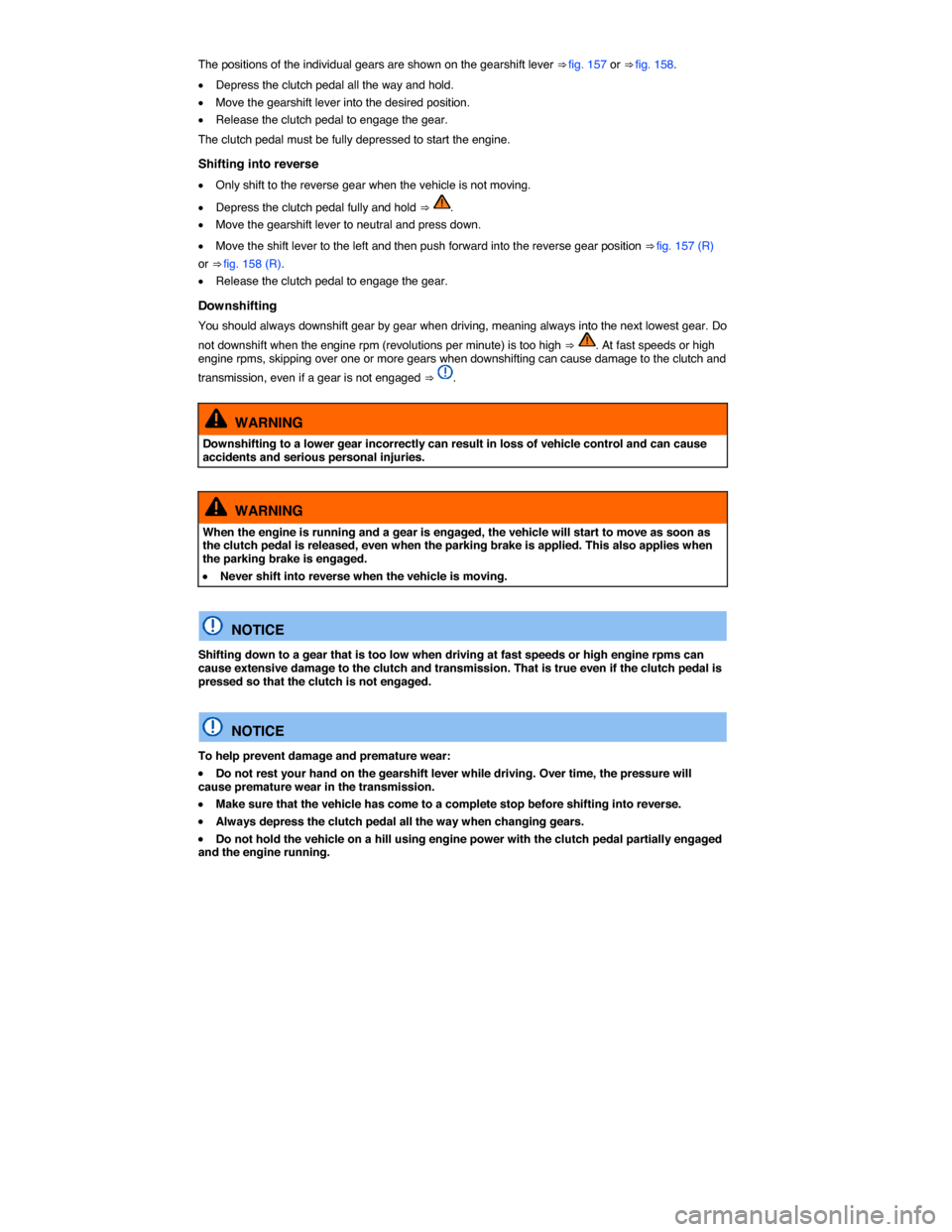2015 VOLKSWAGEN PASSAT Speed
[x] Cancel search: SpeedPage 188 of 397

When you take delivery of the vehicle, the Tire Pressure Monitoring System is calibrated for the factory-recommended cold tire inflation pressure for the tires on your vehicle, as shown on the label
inside the fuel filler flap ⇒ Tire inflation pressure inside the driver door ⇒ Tire inflation pressure.
�x The system must be recalibrated using the SET button whenever you remove and remount or change any wheel or tire on the vehicle, even if the reinstalled or replacement wheels and tires are
identical to those that were removed and even if the tire pressure does not change ⇒ Tire Pressure Monitoring System (TPMS) and recalibration with the SET button.
�x If you have to adjust the tire pressure on a warm tire, fill the tire with 2.0 - 4.35 psi (20 - 30 kPa)
more than the pressure specified on the tire pressure label inside the fuel filler flap ⇒Tire inflation pressure inside the driver door Tire inflation pressure.
�x If the TPMS determines that the air pressure in at least one tire is too low, carefully check the pressure in all 4 tires with an accurate tire pressure gauge. Low tire pressure usually cannot be deter-mined by looking at the tire. This is especially true of low-profile tires.
If you have work done on your wheels or tires, inform the workshop that the vehicle is equipped with a Tire Pressure Monitoring System (TPMS).
New tires may expand slightly the first time they are driven at high speeds, which can trigger a tire pressure warning. Remember that tire pressure can only be properly measured when the tire is
“cold” ⇒ Tires and wheels.
Only replace old tires with tires that have been approved by Volkswagen for your vehicle type.
Indicator light (telltale) �
Page 217 of 397

Please perform these steps only in the order listed.
Step Vehicles without Keyless Access Vehicles with Keyless Access
4. Turn the vehicle key to position ⇒ fig. 150 (2) – do not depress the accelerator pedal. Briefly press the starter button ⇒ fig. 151 – do not depress the accelerator pedal. An authorized vehicle key must be inside the vehicle in order to start the engine.
5. When the engine starts, release the vehicle key. When the engine starts, release the starter button.
6. If the engine does not start, switch off the ignition and start again after about 1 minute. If the engine does not start, switch off the ignition and start again after about 1 minute. Use the emergency start feature if neces-sary
7. Release the parking brake when you are ready to start driving
WARNING
Never leave the vehicle unattended while the engine is running and especially when it is in gear. The vehicle could move suddenly, or some other unexpected event could occur, result-ing in property damage, fire or personal injury.
WARNING
“Starting fluids” can explode and can cause a “run-away” vehicle condition.
�x Never use starting assist fluids.
NOTICE
�x You can damage the starter or the engine if you try to start the engine when the vehicle is still moving, or if you try to restart the engine right after switching it off.
�x Avoid high engine speeds, full throttle acceleration, and heavy engine loads when the en-gine is cold.
�x Do not try to start the engine by pushing or towing the vehicle. Unburned fuel can get into the catalytic converter and damage it. The steering column may also be locked.
Do not let your vehicle warm up while standing; instead, start driving right away after making sure that you have good visibility through all windows. This will help the engine reach operating tem-perature faster and keep down emissions.
Major consumers of electricity are temporarily switched off when the engine is being started.
After starting a cold engine, there may be increased operating noises for a few seconds. This is normal and harmless.
Page 224 of 397

NOTICE
�x Never “ride” the brakes by keeping your foot on the brake pedal when you do not want to brake. This will make the brakes wear faster.
�x Before driving downhill, especially on hills that are long or steep, always reduce speed and shift into lower gear (manual or automatic transmission). This will let the vehicle use engine braking and reduce the load on the brakes. Otherwise, the brake system could overheat and even fail. Only use the brakes when you need them to slow the vehicle down more or to stop.
Warning and indicator lights
�
Page 226 of 397

WARNING
Objects in the driver footwell can prevent the pedals from moving freely. This can cause loss of vehicle control and increase the risk of serious personal injuries.
�x Always make sure that nothing can interfere with the pedals.
�x Always fasten floor mats securely to the floor.
�x Never put floor mats or other floor coverings on top of already installed floor mats.
�x Always make sure that nothing can fall into the driver footwell while the vehicle is moving.
NOTICE
Always make sure that the pedals are able to move freely and that nothing can interfere with them. If a brake circuit fails, more brake pedal travel will be needed to bring the vehicle to a stop. The brake pedal must be pressed farther and harder than normal.
Manual transmission: Gearshift lever
Fig. 157 Gearshift pattern of a 5-speed manual transmission.
Fig. 158 Gearshift pattern of a 6-speed manual transmission.
�
Page 227 of 397

The positions of the individual gears are shown on the gearshift lever ⇒ fig. 157 or ⇒ fig. 158.
�x Depress the clutch pedal all the way and hold.
�x Move the gearshift lever into the desired position.
�x Release the clutch pedal to engage the gear.
The clutch pedal must be fully depressed to start the engine.
Shifting into reverse
�x Only shift to the reverse gear when the vehicle is not moving.
�x Depress the clutch pedal fully and hold ⇒ .
�x Move the gearshift lever to neutral and press down.
�x Move the shift lever to the left and then push forward into the reverse gear position ⇒ fig. 157 (R)
or ⇒ fig. 158 (R).
�x Release the clutch pedal to engage the gear.
Downshifting
You should always downshift gear by gear when driving, meaning always into the next lowest gear. Do
not downshift when the engine rpm (revolutions per minute) is too high ⇒ . At fast speeds or high engine rpms, skipping over one or more gears when downshifting can cause damage to the clutch and
transmission, even if a gear is not engaged ⇒ .
WARNING
Downshifting to a lower gear incorrectly can result in loss of vehicle control and can cause accidents and serious personal injuries.
WARNING
When the engine is running and a gear is engaged, the vehicle will start to move as soon as the clutch pedal is released, even when the parking brake is applied. This also applies when the parking brake is engaged.
�x Never shift into reverse when the vehicle is moving.
NOTICE
Shifting down to a gear that is too low when driving at fast speeds or high engine rpms can cause extensive damage to the clutch and transmission. That is true even if the clutch pedal is pressed so that the clutch is not engaged.
NOTICE
To help prevent damage and premature wear:
�x Do not rest your hand on the gearshift lever while driving. Over time, the pressure will cause premature wear in the transmission.
�x Make sure that the vehicle has come to a complete stop before shifting into reverse.
�x Always depress the clutch pedal all the way when changing gears.
�x Do not hold the vehicle on a hill using engine power with the clutch pedal partially engaged and the engine running.
Page 229 of 397

Automatic Shift Lock (ASL)
The Automatic Shift Lock (ASL) in Park (P) and Neutral (N) prevents drive positions from being en-gaged inadvertently, which would cause the vehicle to move.
To release the ASL, depress and hold the brake pedal with the ignition switched on. Press the release button on the selector lever at the same time.
The ASL is not engaged if the selector lever is moved quickly through Neutral (N) (e.g., when shifting from Reverse (R) to Drive (D)). This makes it possible to “rock” the vehicle backwards and forwards if it is stuck in snow or mud. The ASL engages automatically if the brake pedal is not depressed and the lever is in Neutral (N) for more than about 1 second and the vehicle is traveling no faster than about 3 mph (5 km/h).
In rare cases, the ASL may not engage on vehicles with DSG® Direct Shift Gearbox. If this happens, power to the drive wheels will be interrupted to prevent the vehicle from moving unexpectedly. The green indicator light �K will blink and a text message will be displayed. To engage the Automatic Shift Lock (ASL):
�x Depress and then release the brake pedal. Try to engage the ASL again.
WARNING
Moving the selector lever to the wrong position can cause loss of vehicle control, a collision, and serious personal injury.
�x Never accelerate when moving the selector lever.
�x When the engine is running and a drive position is engaged, the vehicle will start to move as soon as the brake pedal is released.
�x Never shift into Reverse or Park when the vehicle is moving.
WARNING
Unintended vehicle movement can cause serious personal injury.
�x Never get out of the driver's seat while the engine is running, especially when the trans-mission is in a drive gear. If you must leave your vehicle while the engine is running, always set the parking brake and shift the transmission into Park (P).
�x Never leave the vehicle in Neutral (N). It will roll down hills, whether the engine is running or not.
�x When the engine is running and a drive gear - Drive (D), Sport Drive (S), or Reverse (R) - has been selected, press and hold the brake pedal to keep the vehicle from moving. The ve-hicle may “creep” and move forward or backward even if the engine is idling slowly.
�x Never shift into Reverse (R) or Park (P) when the vehicle is moving.
NOTICE
Even though the transmission is in Park (P), the vehicle may move a couple of inches (a few centimeters) forwards or backwards if you take your foot off the brake pedal after stopping the vehicle without first setting the parking brake.
If the selector lever is moved into Neutral (N) by mistake when the vehicle is moving, take your foot off the accelerator pedal. Wait until the engine speed has dropped to idle speed before moving the selector lever into a drive gear.
Page 231 of 397

Using Tiptronic with the shift paddles behind the steering wheel
�x The paddles ⇒ fig. 161 work when the selector lever is in the Tiptronic position or when the selec-tor lever is in Drive (D) or Sport Drive (S). You do not have to move the selector lever over to the right into the Tiptronic position.
�x To upshift, pull the paddle + �/�&�& on the right toward you.
�x To downshift, pull the paddle – on the left toward you.
�x To switch off Tiptronic mode, pull the paddle on the right + �/�&�& toward you and hold it there for about 1 second.
Tiptronic will switch off automatically if the shift paddles have not been used for a while and the selec-tor lever is not in the Tiptronic position.
NOTICE
�x During acceleration, the transmission will shift automatically into the next higher gear before reaching maximum engine speed (rpm).
�x If you use Tiptronic to shift into a lower gear, the transmission will downshift only when doing so will not over-rev the engine.
Driving with automatic transmission
�
Page 233 of 397

�x If the text message and acoustic warning repeat themselves every 10 seconds or so, you must park the vehicle in a safe place as soon as you can safely do so and stop the engine. Let the transmission cool down.
�x To help prevent damage to the transmission, do not drive the vehicle again until the acous-tic warning has stopped. As long as the engine is overheated, avoid stop and start driving and avoid low speeds (“walking pace”).